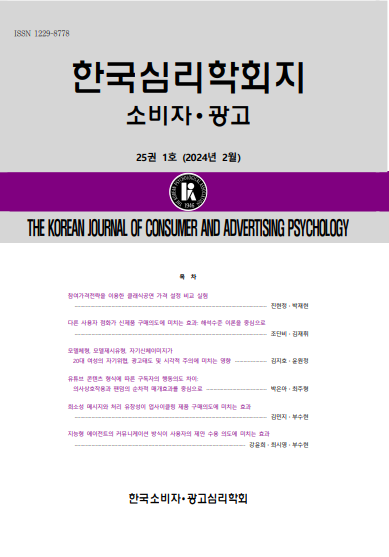open access
메뉴.png)
open access
메뉴 ISSN : 1229-8778
ISSN : 1229-8778
The research verified how prosocial behaviors vary as social exclusion, social distance , and self-construal level using three-way ANOVA. As a result of the experiment, a main effect of social exclusion was significant. Donations were significantly higher for a case of those who experienced social exclusion than for those not. As a result of additional analysis on three-way interaction for hypothesis testing, there was significant difference in donations according to self-construal in case of experiencing social exclusion from someone with a short social distance. In other words, if one experiences social exclusion from someone with a short social distance, it was confirmed that those who conducted interdependent self-construal had higher average donations than those who conducted independent self-construal. Finally, all two-way interaction effects were significant. In particular, the noteworthy findings from verification showed that donations were significantly higher for persons who experienced social exclusion from someone with a shot social distance than from someone with a long social distance, persons of interdependent self-construal who experienced social exclusion than those not, and persons of interdependent self-construal than those of independent self-construal when there existed social exclusion. This research expanded the understanding of social exclusion which has been relatively less investigated in a consumer field by considering both self-construal level and social distance.
